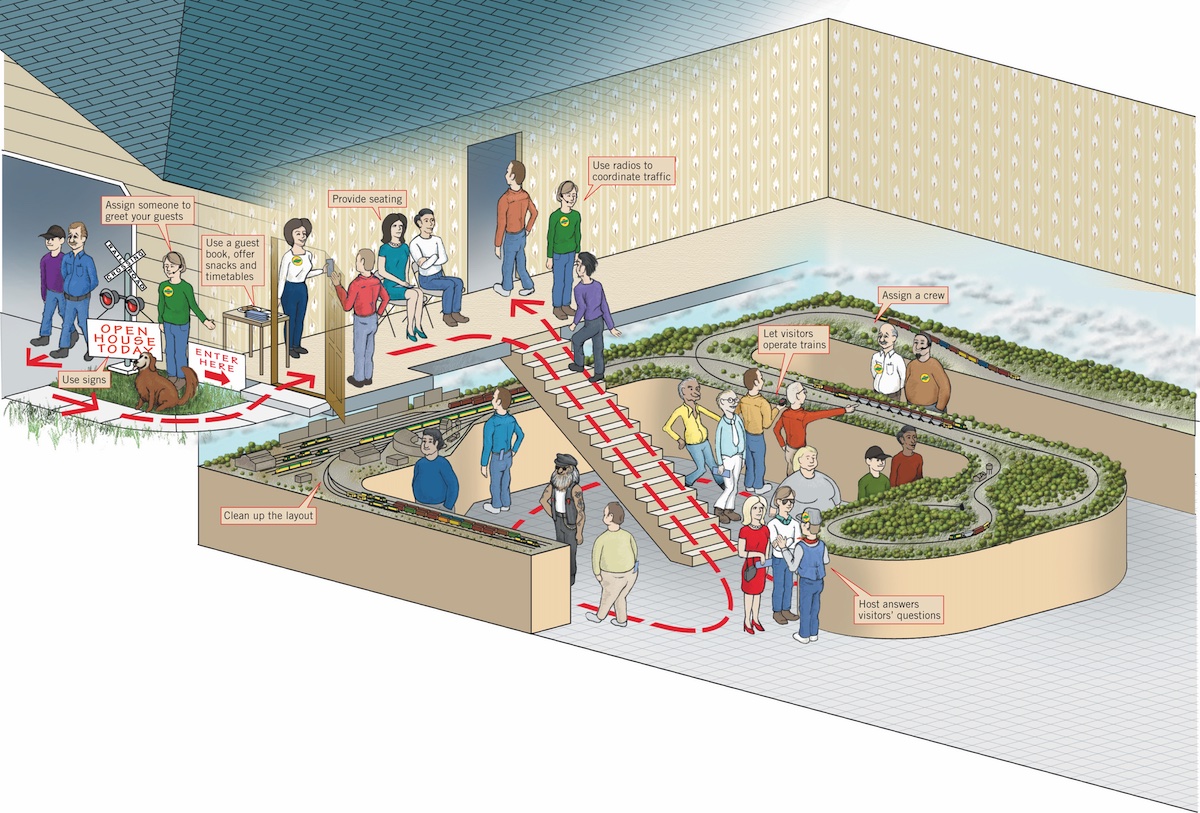
This article was originally published in the November 2002 issue of Model Railroader.
Hosting an open house is a great way for model railroaders to share the hobby with others. But coordinating one that people will never forget requires not only good planning, but practice.
In the past two decades, I’ve hosted several open houses, including one for the National Model Railroad Association‘s national convention in 1999. I’ve also been a guest at many other open houses, operating nearly 50 layouts. Here are some helpful tips for hosting open houses that I have picked up over the years.
Prepare the house
My wife, Virginia, has been supportive in hosting open houses. We prepare the house itself as we would for dinner guests by dusting, vacuuming, and picking up. While cleaning the inside is important, a little outside yard work can make guests feel welcome as well. We mow the lawn, wash the walkway, and do whatever it takes to make the curb-to-house walk pleasant. Having a small railroad crossing sign or other train-related signs also helps.
Have a good crew
I have found two different groups of people help make hosting an open house easy: the railroad operating crew and house hosts. I appoint one person as crew supervisor, which transfers responsibility for the railroad operation to a single person and leaves me available to answer guests’ questions.
House hosts welcome people to the open house, direct guests to the layout, manage the guest book, maintain the treat table, and direct guests to the exit. I usually have three house hosts when I have guests over for a tour: one at the entrance door, and the other two at the top and base of the stairs.
With several people helping in various capacities, a group training session may also be time well spent. Training can be as simple as telling the crew supervisor how you want the railroad operated. When I use non-model railroad people to run the layout, I have them come for an evening of training and practice a week or two before the open house.
Spruce up the layout
Nobody likes to visit a model railroad and watch the crew re-rail cars. Most people come to watch trains run, not to see a static display, so I take time to clean the track, as well as locomotive and car wheels. I will make up special show trains and ensure that they run well. Any car that derails is immediately removed from service.
An open house is also an incentive to complete projects, install new buildings, put down ground cover, add a new engine or cars, buy new furniture, or carpet or refurbish the house.
Distribute a timetable
I like to give a timetable to guests as they enter. Each has a description of the models as well as a schematic of the layout. The timetable contains information that I seek when I visit a layout, plus some trivia.
The timetable is printed in several colors. We distribute one color for 30 minutes, then change to another. Seeing the different colors tell me how long a person has been present. If needed, a timetable can be used for crowd control. I may politely ask those with an earlier timetable to leave and make room for those upstairs who are waiting in line.
Keeping people, who are in line, busy while they are waiting to see the model railroad will also add value to the open house. I have used slide shows and videos in the garage or crew quarters to keep people occupied. I also have set up special-interest railroad displays.
Use radios if you got ’em
I use five-channel radios for my operating sessions and also to manage visitor traffic. Since my layout is in the basement and the entrance is through the garage and kitchen on the upper level, I find it easy to manage traffic when the entrance door host is in radio contact with the crew supervisor in the basement. The door host can hold people until there is space for them.
Radios are particularly useful for bus tours. When the bus arrives, the door host can notify the crew operator to begin train operations. When the bus driver is ready to leave, the door host can tell the crew supervisor to make a departure announcement.
Use a guest book
I began using a guest book when the first visitor came to see my railroad. Today, everyone — friend, relative, open house, or operating session guests — signs the guest book on their first visit. People from 40 states and 28 foreign countries have visited my layout.
Snacks are optional
While not necessary for an open house, Virginia likes to bake steam locomotive-shaped sugar cookies. Most model railroaders I know like to eat, and cookies seem to be sufficient. Often,
the cookies are decorated in the colors of the railroad. For some events, she sets out yellow and green M&M’s to match the color scheme of the Chicago & North Western, which I model.
Publicize
When I self-sponsor an open house, I publicize the event. I usually target a specific audience by using a flyer, such as a church bulletin insert. Others post signs at hobby shops (with permission, of course). Another approach would be to contact your local newspaper to do a special-interest story.
Digital promotions of open houses have now become the norm on online forums and social media platforms.
A final thought
Hosting an open house can be a bit stressful. But the reward far exceeds the anxiety, and they are great learning experiences. I have learned a lot by visiting other layouts, and people who visit my Minnesota Valley Division report that they have learned from me too. It’s fun, so go ahead and give it a try!






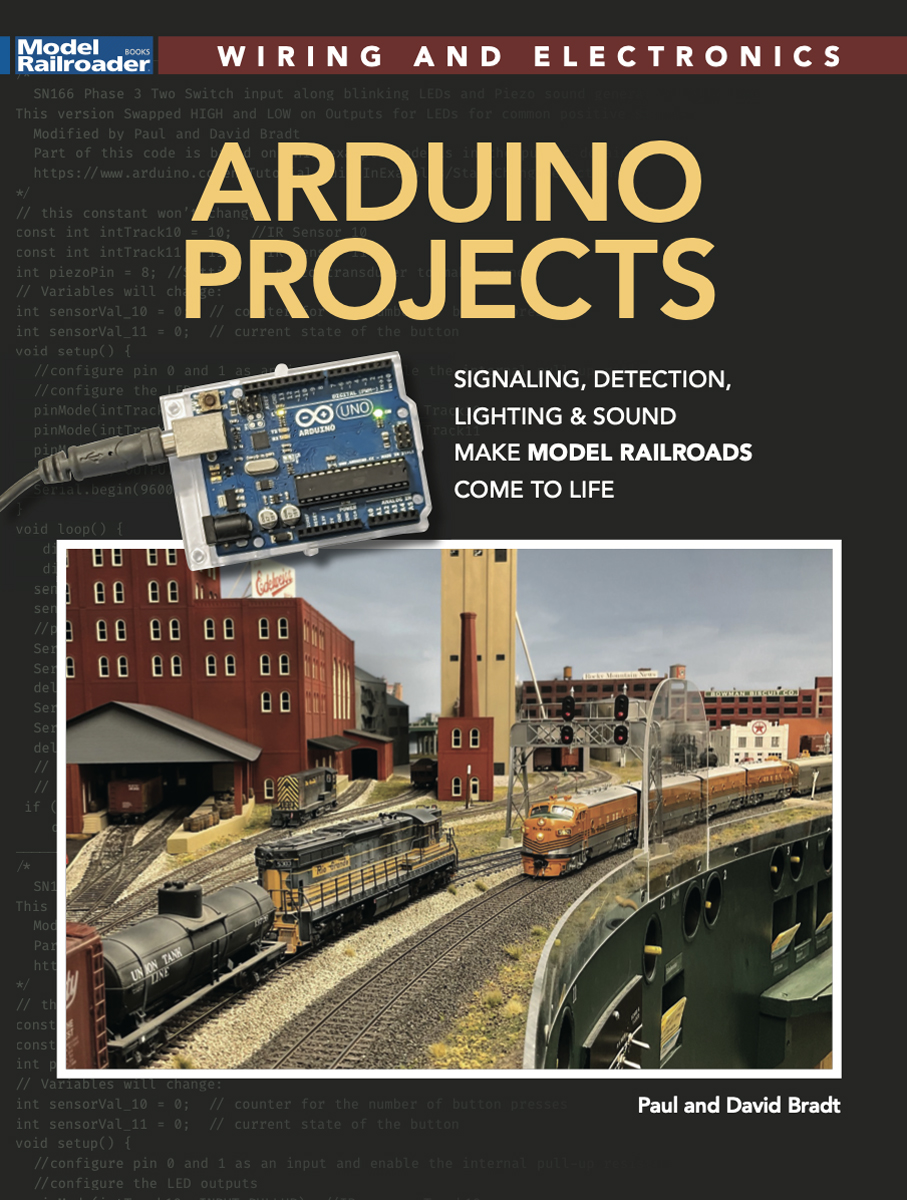
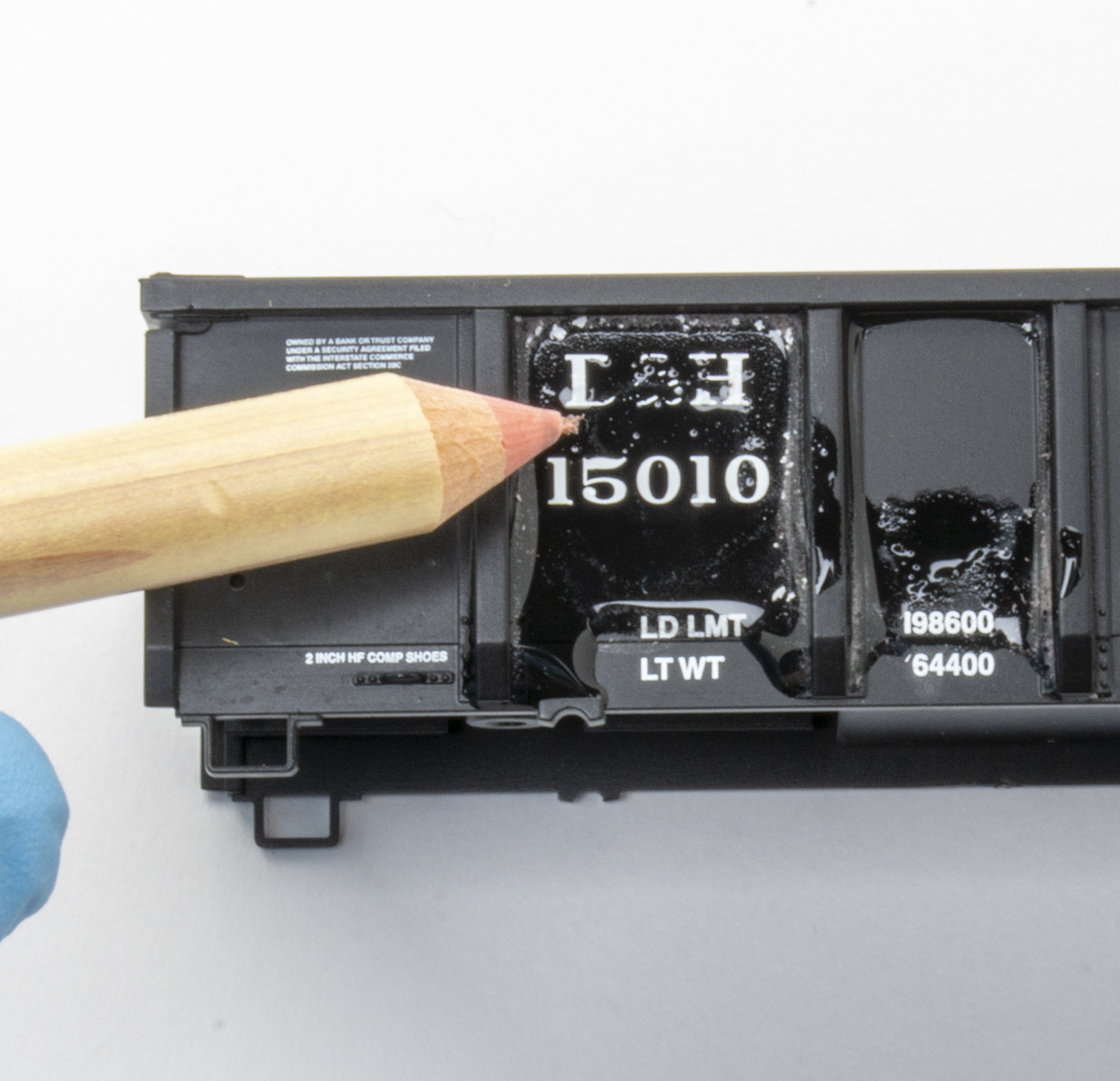
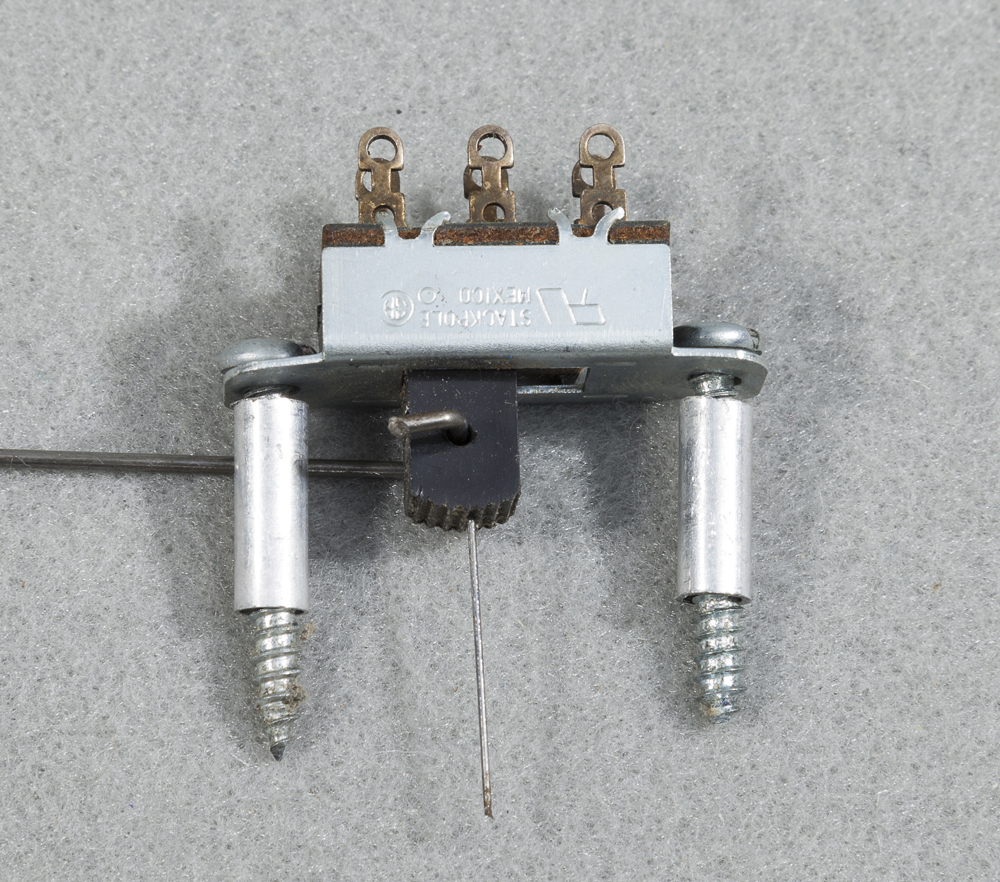
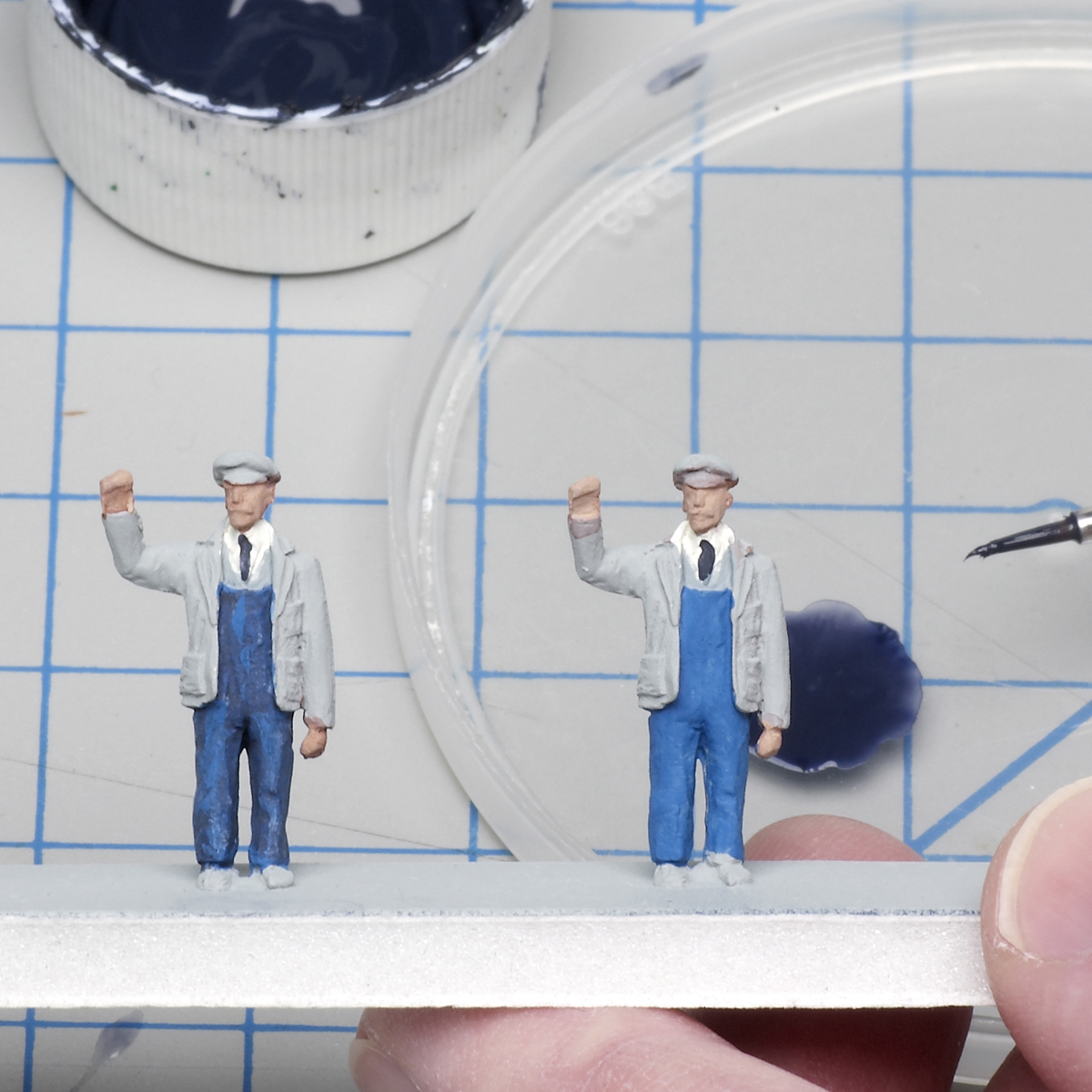


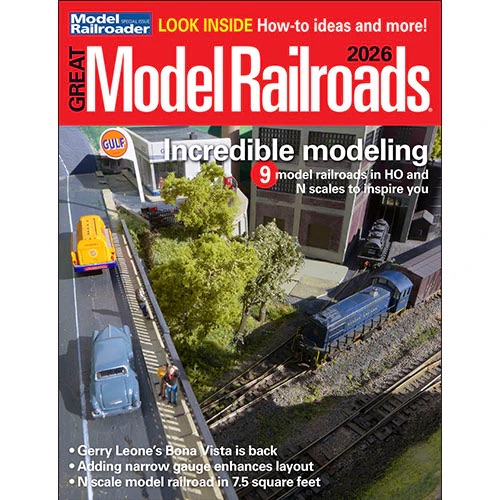
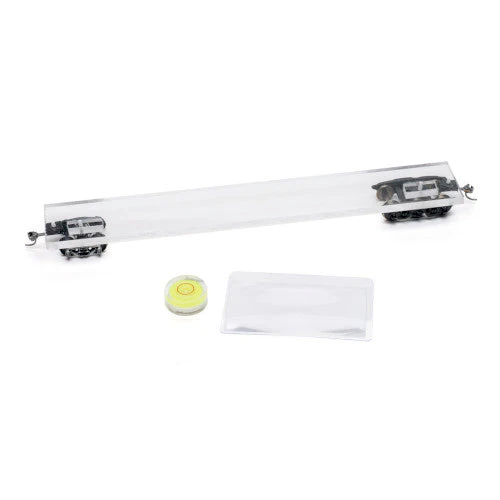
I always enjoyed your operating sessions that I was a part of when I lived in Minnesota. You have a great layout. I miss the sessions, the camaraderie, and I miss Minnesota. Wish I were back there.